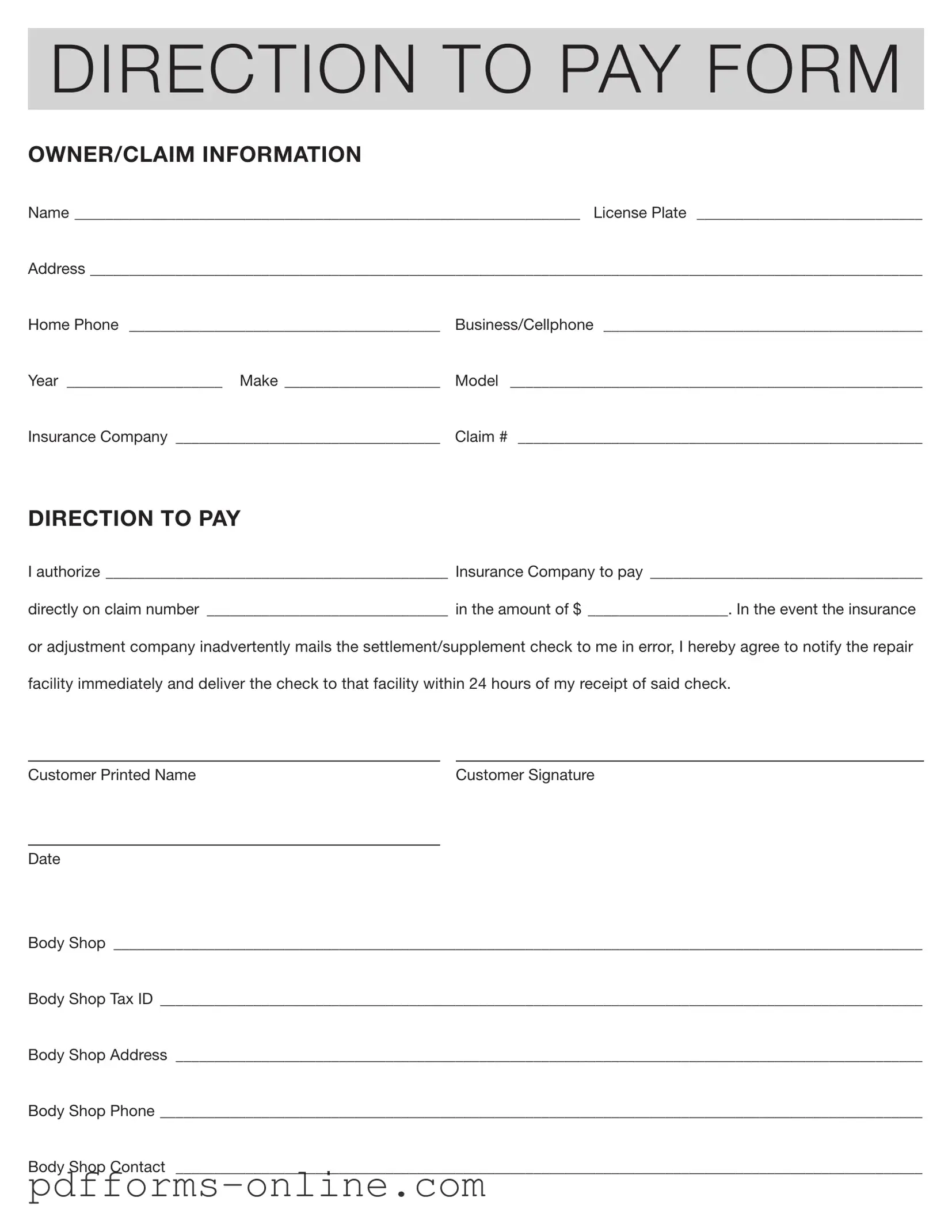The Authorization and Direction Pay form serves a crucial role in the claims process for vehicle repairs following an accident. This form allows a vehicle owner to designate a specific repair facility to receive payment directly from their insurance company for the services rendered. By completing this document, the vehicle owner provides essential information such as their name, address, and vehicle details, including the make, model, and license plate number. Additionally, the form requires the owner to specify their insurance company and claim number, ensuring that all parties are aligned on the transaction. The owner must also authorize the insurance company to pay the repair facility directly, indicating the amount to be paid. Importantly, the form includes a provision that obligates the owner to promptly notify the repair shop if they mistakenly receive a settlement check, ensuring that funds are properly directed. This clarity and organization help streamline the payment process, reducing potential delays and misunderstandings between the vehicle owner, the insurance company, and the repair facility.

